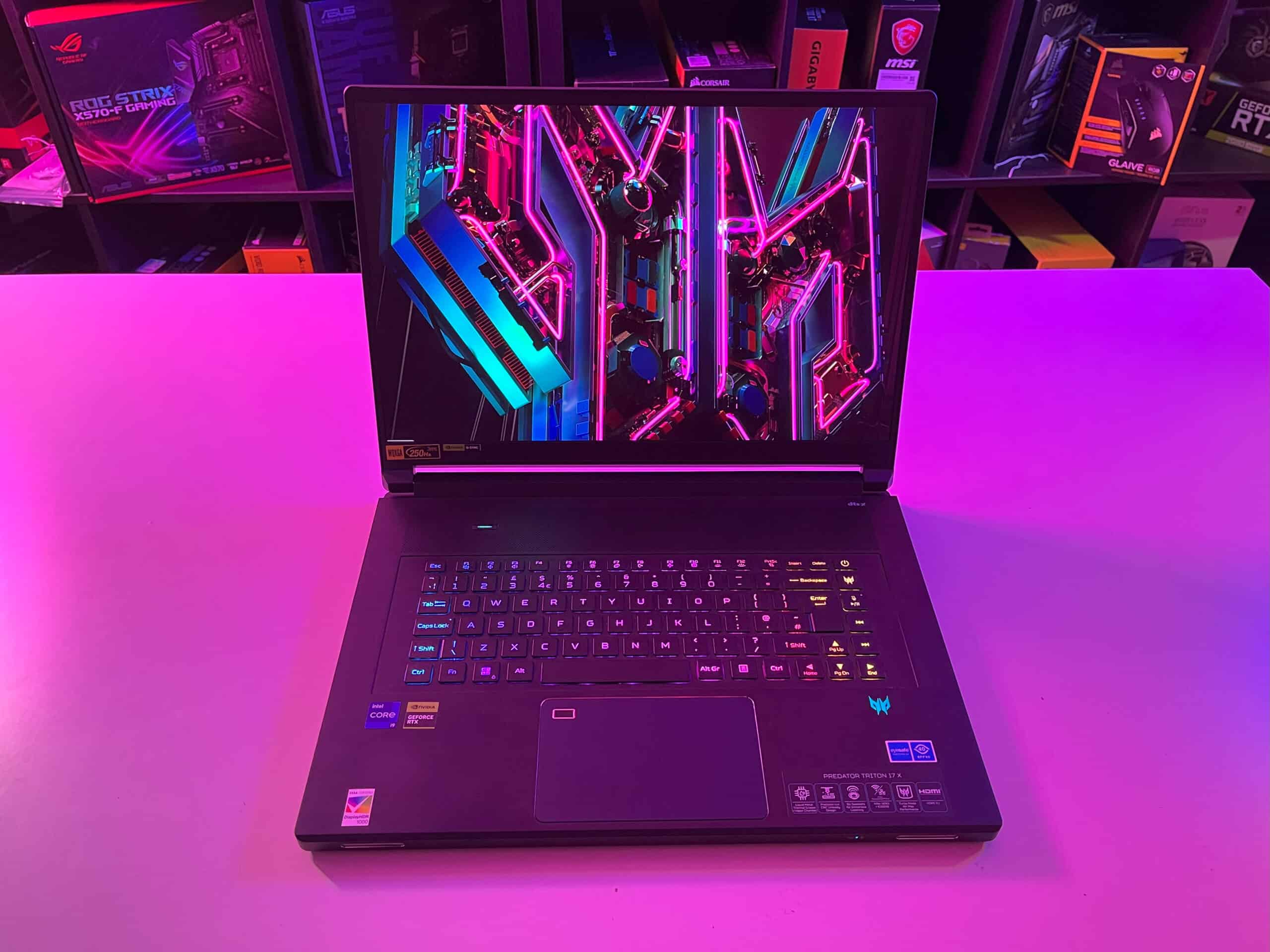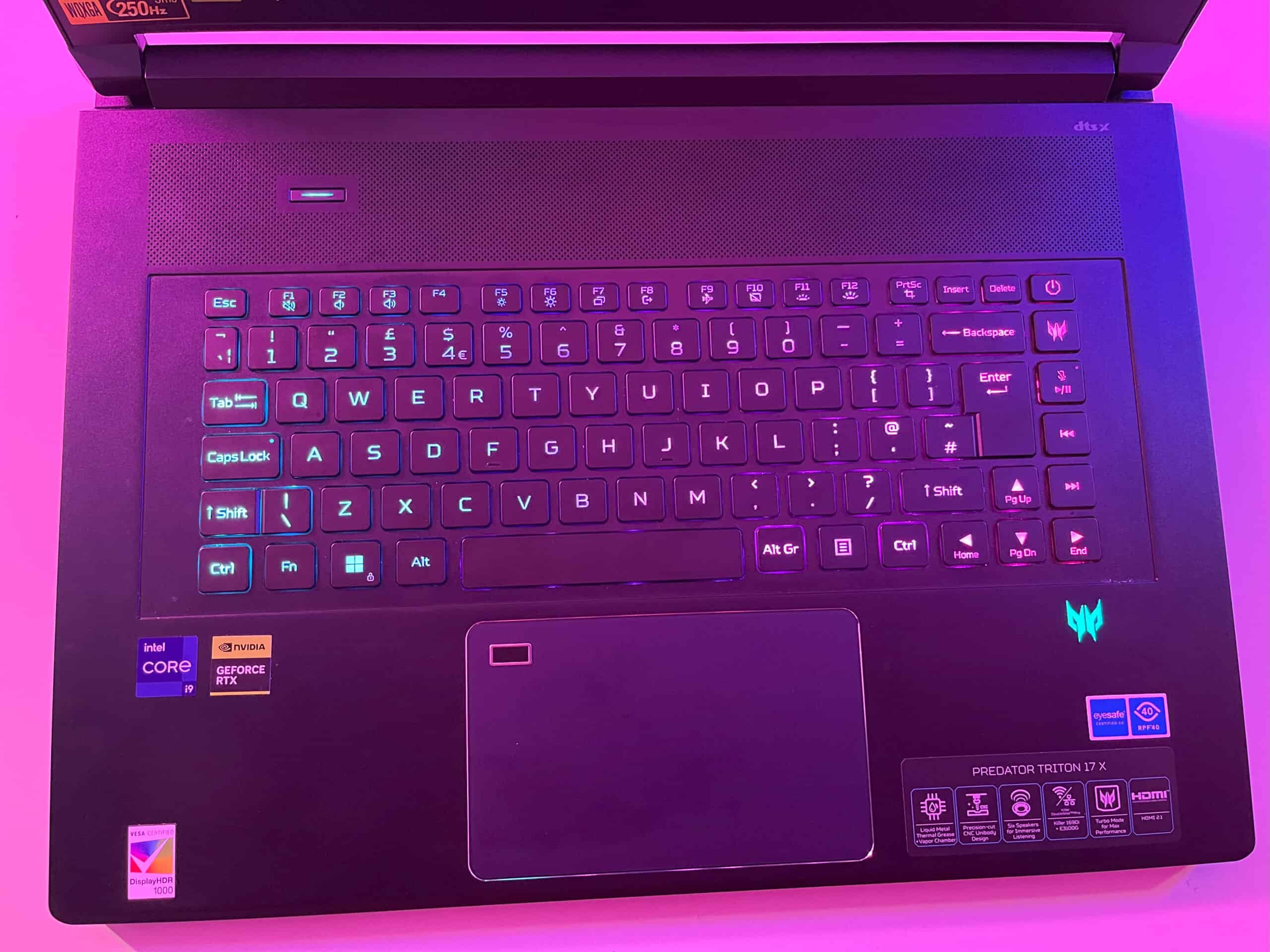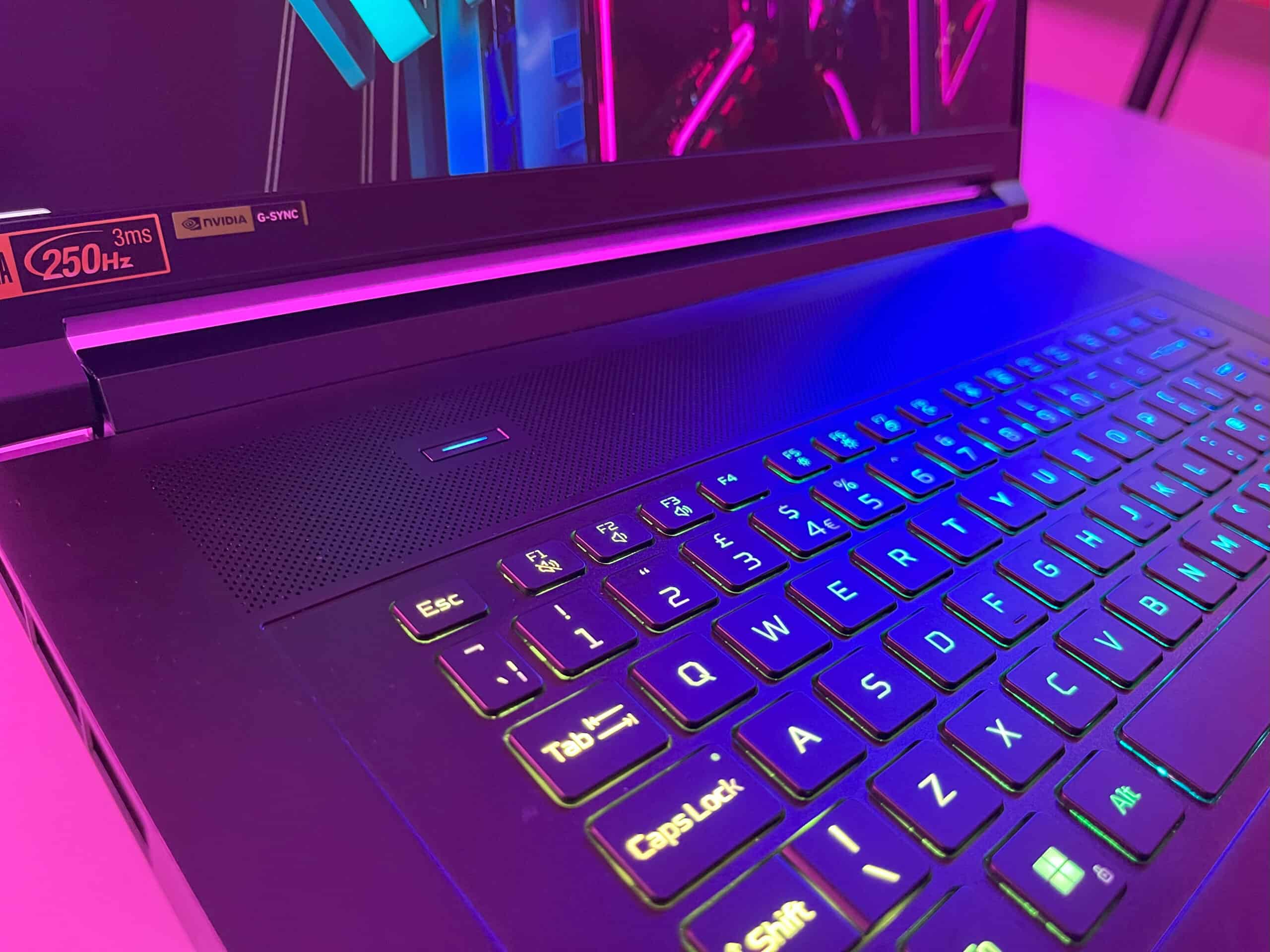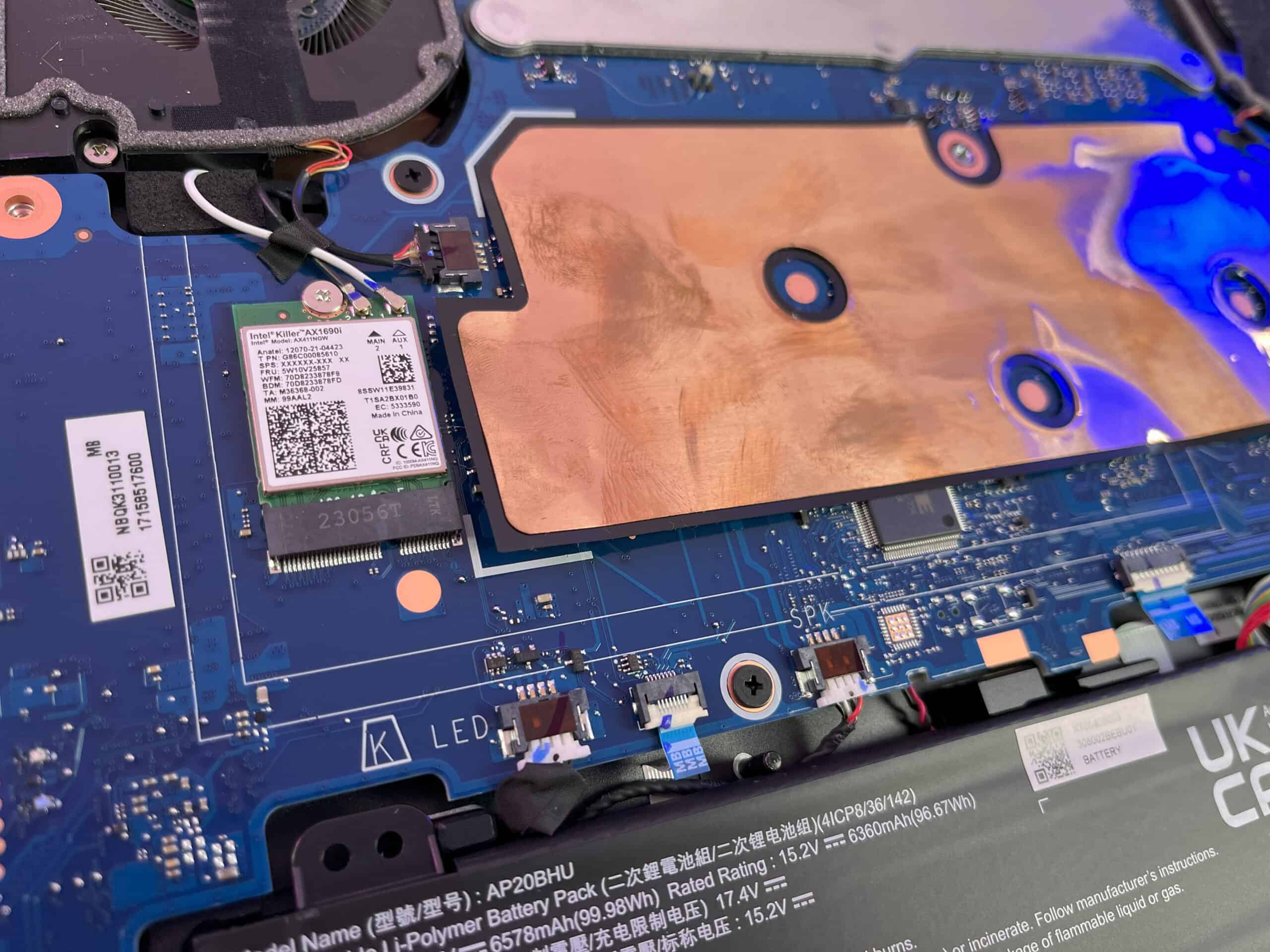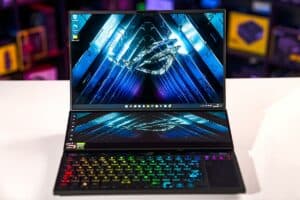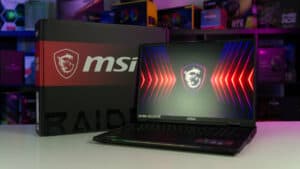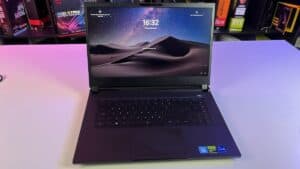Acer Predator Triton 17X review: A 250Hz Mini-LED gaming laptop with high-end specs
We test & benchmark the Acer Predator Triton 17X gaming/creator laptop with Nvidia RTX 4090 and Intel Core i9-13900HX

WePC is reader-supported. When you buy through links on our site, we may earn an affiliate commission. Prices subject to change. Learn more
The Acer Predator Triton 17X gaming laptop is a new entry in the Triton sub-range of high performance gaming laptops from Acer. Besides gaming, this RTX 4090 laptop is also designed to function as a laptop for creatives who are looking for the power of a desktop-replacement device but in a far more slender chassis. Given its impressive specifications then, how does it measure up?

Acer Predator Triton 17X (Mini-LED, RTX 4090, i9-13900HX)
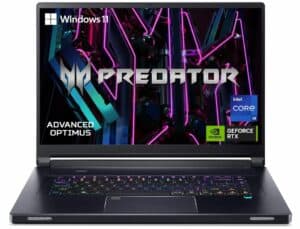
- Superbly bright Mini-LED screen
- Great contrast, gamma & color accuracy
- 100% sRGB & DCI-P3 coverage
- 250Hz refresh rate
- Good quality membrane keyboard & trackpad
- Quiet fans on Balanced and Quiet profiles
- Lots of RAM and storage
- Good build quality
- RTX 4090 GPU performs more like an RTX 4080
- Expensive given underwhelming FPS performance
- Poor battery life
- Internal design means upgrading the RAM & storage is difficult
Pricing
The Acer Predator Triton 17X 17.0″ gaming laptop comes in one variant as far as the core components are concerned, all units are equipped with an Intel Core i9-13900HX CPU and Nvidia RTX 4090 GPU. There are however two different RAM and SSD loadouts available, with the base model coming with 32GB of RAM and a 2TB SSD, with an MSRP of $3,799.99, and the 64GB and 4TB SSD option costing substantially more. We have already seen price reductions on the Triton 17X however which makes the cost more reasonable, and we’d advise waiting until you see it on sale at some point in Q4 2023 before picking one up.
Overall Design
The laptop comes in a one off-black color variant which looks nice enough if a bit uninspiring. There’s an embossed silver logo on the lid plus light up RGB on the chassis, in addition to the RGB backlighting of the keyboard, which is decently bright. There’s a large ventilation grill above the keyboard along with a button that allows for quick switching between the performance presets.
CPU
Intel i9-13900HX
Graphics Card
NVIDIA GeForce RTX 4090
RAM
32GB/64GB PDDR5
Storage
2TB – 4TB 2280 PCIe NVMe 4.0 SSD
Max Refresh Rate
250Hz
Resolution
2560 x 1600)
Screen Size
17.3-inch
Panel Type
Mini-LED
Touchscreen?
No
Ports
2x USB-A (Gen 1), 2x USB-C (Gen 2, Thunderbolt 4, Power Delivery, DisplayPort) SD card reader, HDMI 2.1, 3.5mm combo jack, 2500 Mbit ethernet, Kensington Lock
Webcam
1080p
Laptop weight: 3.05kg/6.72lbs, Power adapter weight: 1.25kg/2.76lbs, Combined weight: 4.30kg/9.48lbs Dimensions: 21.9mm x 380.35mm x 280mm (H x W x D)
The Acer Predator Triton 17X is predominantly made from CNC-milled aluminium, which makes it feel very durable, however it’s definitely not light – the substantial weight limits its portability quite a bit despite the slimline form factor, although it’s still a couple of hundred grams lighter than other RTX 4090 laptops with the same screen size. The build quality appears to be great overall however – screen wobble is minimal and the hinge joints feel sturdy. The one issue we did notice on our unit was that the power cable didn’t seem to ‘click’ into the socket particularly well and so was prone to come loose on occasion when the laptop was moved.
The keyboard on the Acer Predator Triton 17X is a chiclet-style membrane keyboard, however the keys have decent travel and feel nice and responsive – we’d certainly say it’s one of the best membrane keyboards we’ve used on a gaming laptop for both gaming and typing. We would however have liked to have seen a full-sized keyboard with a numpad on a device of this size to improve its usefulness in productivity tasks – though this might be a plus to you if you don’t use the numpad and would rather have more space. The individual key backlighting is nice and bright, and there’s a good range of effects and lighting control within the onboard software.
The touchpad is of a good quality – feeling sturdy, smooth, responsive and with a satisfying click. There’s also a fingerprint reader in the top left.
The internal webcam of the laptop has a 1080p max resolution, but caps out at 30 FPS. Image quality is respectable but the microphone quality was average at best, which is a bit disappointing but it’s still serviceable.
The speakers on the Triton 17X were loud and produced audio of decent quality. The sound was somewhat tinny, and didn’t have much bass replication, but was still above average. They’re certainly not as good as MacBook speakers when it comes to audio quality or bass replication, which remain the best of any laptop by a substantial margin, but by the standards of gaming laptops they’re pretty solid.
Screen
The screen is exactly 17-inches, as opposed to the 17.3” models that you normally see. Along with the 16:10 aspect ratio, you get a lot of screen real estate, and it’s an enjoyably immersive experience when gaming, plus gives you a load of space for general productivity tasks. The 2560 x 1600 resolution (and 178 ppi) makes for a nice crisp image.
The 250Hz maximum refresh rate is also slightly higher than the more common 240Hz, but makes relatively little difference to the viewing experience. Either way it’s a great refresh rate, and sufficient for anyone’s needs – from competitive gamers to those interested in single player titles.



The color gamut coverage was impressive and meets the claims of Acer regarding 100% sRGB and DCI-P3 coverage, with an Average deltaE*00 variance (color accuracy) out of the box of 3.32 (which isn’t great – you ideally want sub 2.5) but which improved to 0.58 after calibration, which is excellent – ideal for design work in either of these color spaces. You also get 97.2% coverage of the Adobe RGB space.
We tested various other visual data points for accuracy as well (although we had trouble measuring Black point & contrast ratio – more on this below).
Ideal values for each measurement are:
6500K (White point), 0/m² (Black point), infinity:1 (Contrast ratio), 0 (average deltaE*00), 2.20 (gamma).
Prior to calibration the results we recorded were:
6475K (White point), 3.32 (average deltaE*00), 2.03 (gamma).
After calibration we recorded the following:
6542K (White point), 0.58 (average deltaE*00), 2.20 (gamma)
These are very impressive results, particularly following calibration. In terms of the missing contrast ratio and Black point results, we had trouble with our usual DisplayCAL test in getting these results, which is nothing to do with the laptop itself of course. In lieu of our own data, we’d point to the result obtained by LaptopMedia who recorded a 36000:1 Contrast ratio, which is excellent – about three times as good as your average gaming laptop IPS panel, though not as good as the infinity:1 that OLED panels can achieve. Black point results were not stated, but given the contrast score, we can assume these are good.

Turning to panel uniformity, the above image shows the results we attained. When interpreting the data, any average color variation under 1.00 is good and shows up as green. The results were good overall, with the exception of the top-left corner, which showed quite a high degree of average and maximum variation in its color replication. As this is confined to a specific area, the screen is still suitable for color accurate work. Additionally, different units are likely to have varying results, so bear this in mind.
Finally, we tested the brightness of the display. Acer claimed the Triton 17X can hit a peak brightness of 1,000 nits, however we only recorded 832 cd/m² in our test, with a minimum of 16 cd/m². This is still a very good score though, and you can easily use this laptop outdoors on a sunny day. The 120 cd/m² mark (the standard brightness for calibration) was achieved at 28% in the brightness settings.
Battery Life
We conducted our standard battery two hours of full screen YouTube, then spent the rest of the time browsing the web and writing documents within GoogleDocs. We set the laptop to 28% brightness (the 120 cd/m² setting), with Quiet mode enabled, battery saving settings switched on in Windows, with Bluetooth turned off but Wi-Fi was left on and used. The keyboard RGB was turned off.
We got around 2 hours and twenty minutes of battery life in our test, which is less than ideal, and limits the utility of the device as a general productivity machine. You’ll basically need to take the charger with you whenever you’re using this device.
Software
The onboard software, PredatorSense, can be opened either via the desktop or by pressing the button on the keyboard below the power button. The software contains the RGB controls for the keyboard, plus the light-up logo on the bottom right of the chassis, and some basic CPU/GPU performance and temperature monitoring.
The main attraction is of course the performance tweaking capability. You get four performance presets (Quiet, Balanced, Performance, Turbo) and three fan control presets (Auto, Max, Custom), the latter allowing manual control of the two GPU fans and the one CPU fan.
We’ve seen better software out there with more features on premium laptops in this price range, but it’s relatively easy to navigate. The most notable missing feature is a MUX Switch (which is even present in the software of the budget Acer Nitro 5), and to enable this you have to go into the Nvidia control panel > Manage 3D settings, and manually select the preferred graphics processor.
Performance
We conducted our benchmarking on the maximum preset, which in this case was Turbo mode, with the fans set to Max. As you’d expect, on this setting the fans were loud, but no worse than any other high-performance device turned up to the maximum. If you don’t need to crank out the most FPS possible when playing a particular game, we’d recommend opting for Balanced mode, which was pleasantly quiet, with Quiet mode itself (more suitable for general productivity, web browsing etc.) being almost silent.

The temperature of the chassis got warm after prolonged gaming on the max settings, but not uncomfortably so. Looking at the Internal Temperature data we recorded, the results were good overall – with some very impressive GPU temperature results and nice low average CPU temps, but unfortunately quite high CPU max temperatures. Around the mid to low 90°C range is where thermal throttling starts to take place for laptop CPUs, and the high 90°Cs is where degradation can occur to the CPU over time, reducing its performance. We can say then that there’s definitely a risk of thermal throttling on the CPU for the Triton X17, and we’d consider picking up a laptop stand or a laptop cooling pad to reduce the impact of this.
Acer Predator Triton 17X gaming benchmarks
Looking at the performance benchmarks, the Triton 17X performed consistently around 15-20% worse across pretty much all games and settings than the last RTX 4090 laptop we tested: the XMG Neo 17 E23, though admittedly XMG/Eluktronics do produce some of the most high-end laptops on the market. Performance was roughly on par with the XMG Neo 16 E23 with high-TGP RTX 4080 that we previously reviewed, with this laptop actually outperforming the Triton 17X by a few percentage points in some scenarios.
A note regarding the CSGO performance on the Highest preset: these results are likely anomalous and should be ignored; we wouldn’t expect a laptop like the Triton 17X to perform this poorly on such an old game, and this likely points to some issue that cropped up during our test.
Should you buy the Acer Predator Triton 17X?
If you’re solely after a gaming machine, then we wouldn’t advise picking up the Acer Predator Triton 17X at the standard MSRP. The fact is there are far better performing RTX 4090 laptops out there in terms of in-game FPS for a similar price. However, if you’re looking for a creative device, the Mini-LED display is very difficult to beat for these purposes with its excellent color replication and accuracy, brightness and contrast, not to mention very high 250Hz refresh rate for when you are gaming.
The difficulty in upgrading the internal components is a bit of a downside, however, given the ample size options for the RAM and SSDs, it’s not too big of an issue. Although you can’t expect too much in this area from such a high-powered device with such a power-hungry screen, we’d have expected a battery life of a couple of hours longer at least than the measly two hours we got, plus change.
Besides these factors though, there isn’t anything else to complain about. This is a high-quality device that’s a pleasure to use, and if the price drops enough from the RRP to make the performance/price ratio make more sense, we’d definitely recommend it.

Acer Predator Triton 17X (Mini-LED, RTX 4090, i9-13900HX)


